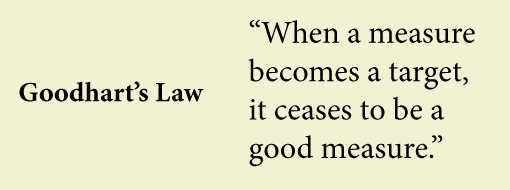We investigate the best sources of high-quality customer feedback, and outline three key mistakes contact centres make when gathering customer feedback.
Three Pitfalls to Avoid When Gathering Customer Feedback
Before we get into how, when and where we can source high-quality customer feedback that can be used to improve the customer experience, we first have to make sure that we avoid these three major pitfalls.
1. The Customer Feedback Has No Purpose
Many contact centres look to attain customer feedback because they think it’s something that they should do, but they don’t use it to drive any major changes to the contact centre or the overall customer experience.
As Guy Arnold, Founder of Slow Selling, recommends: “Start with an intent, what do you want the feedback for? Then, work out where is best to source feedback for the intent, when you plan to attain it and how you are going to use it.”
If we want to improve both the quality and the amount of customer feedback we generate, it is important that we start with a purpose and create a plan around that.
2. The Customer Feedback Asks Closed Questions

The customer wants to tell you what they think, not what you want to hear.
When a customer agrees to share their feedback, they may already have an idea of the types of issue that they want to discuss. If you avoid this issue through asking closed questions, you will likely disillusion them.
As Guy says: “The customer wants to tell you what they think, not what you want to hear. So, you need to tailor your feedback proposition around allowing the customer to say what they believe needs to be said.”
While we want to create questions that spring from our purpose, just asking simple yes or no questions may harm the customer’s experience.
3. Not Responding When You Get Customer Feedback
Responding to customers who have left feedback is important to ensure that the customer feels as though their response was valued.
Yet Guy says: “99% of organisations don’t to this, so they are subconsciously signalling to the customer that their feedback isn’t important to them. If you value someone, you respond to them.”
The practicality of doing this will differ according to your organisation’s size, but we should at least always respond when we’ve been made aware that we have let a customer down, with the aim of solving the customer problem and blowing their socks off.
There is also great value in responding to positive customer feedback to lever the relationship, while neutral feedback gives us an opportunity to build better relationships with our customers.
To find out more about responding to customer feedback, read our article: How to Get the Silent Majority to Respond to a Customer Survey
The Five Places to Source Customer Feedback
Each of the following sources can be great for gathering customer feedback. But remember to apply the following three principles – as suggested by Guy Letts, CEO at CustomerSure – to each of your methods:
- Collect the feedback when the customer is most likely to want to give it
- Focus on making it easy: it shouldn’t take longer than 20 seconds to give the feedback
- Set expectations for the customer to receive a response once they’ve given their feedback and make sure you do so
Keeping this in mind, here are five key ways of sourcing great customer feedback.
1. The Contact Centre Team
A too often forgotten source of customer feedback are your advisors, who are having conversations with customers day-in and day-out, so it is they who can pass on common customer issues and thoughts to the wider organisation.
To gain the most valuable information from the team, Guy Arnold recommends a mixture of informal and formal approaches.
Guy says: “In terms of the informal, schedule time in your day to go around and start conversations with advisors, asking them open questions such as: ‘what sorts of problems have you been dealing with today?’”
You will notice that every so often an advisor will speak of something with a great deal of passion. This is when you know that you’ve hit upon something.
Guy Arnold
“When having these ‘off-the-cuff’ conversations with the team, you will notice that every so often an advisor will speak of something with a great deal of passion. This is when you know that you’ve hit upon something.”
The formal approach that Guy suggests is to bring in a third party (like Slow Selling) to have one-to-ones with the team and ask them three questions:
i. What do we do well?
ii. What do we need to do better?
iii. What would you change if you were the boss?
Guy Arnold adds: “Our employees are the most important customers that we have within our business. If they are not recommending you to their friends and family, something’s wrong.”
2. Transactional Surveys
Transactional surveys involve asking the customer a traditional Customer Satisfaction (CSat) or Customer Effort Score (CES) question after their contact.
Ask the customer after their call if they are happy to take part in the survey and transfer them through to an IVR to answer the question, to get as honest an answer as possible. On written channels, send the customer a link to answer your survey online.
The question “On a scale of one to ten, how satisfied were you with our service today?” is an example of the type of question that you should be asking to measure CSat, but make sure that it doesn’t end there. Give the customer an opportunity to leave a comment, so you’re not just asking closed questions.
The score can then be used as a measure of how well you’re doing, while the open feedback you are also collecting can also be useful, if you use it in the right way.
For example, you can track repeat reasons for negative customer feedback and focus in on those to improve customer happiness or, more simply, use the feedback to better inform your next response to the customer.
But while the comments can be a great resource for customer feedback, don’t get too hung up on the score, as Guy Letts reminds us of Goodhart’s Law:

Referring to this, Guy warns: “CSat scores are good as a measure for your progress, but don’t turn increasing Customer Satisfaction into an advisor target, otherwise you can corrupt any feedback that you receive through this method.”
“For example, you could end up with advisors deliberately not asking unhappy advisors for their feedback or even begging customers to give them a good score.”
3. Customer Research With Focus Groups
An obvious way to gather even more feedback is to talk to your customers face-to-face, whether that’s in customer focus groups, customer panels or even customer interviews.
Once you have identified your purpose, get in touch with your customers who have left good, neutral and negative feedback that was related to the specific part of the customer experience that you are looking to improve.
Ensure that you only involve customers who did this, because if you force them into giving feedback that doesn’t really matter to them, it becomes less valuable and you may end up making changes only for the sake of doing so.

Guy Arnold
Choosing the right customers to talk to is the key to any focus group or interview. If you sell numerous different products/services, categorise customers in terms of product purchased and type of person to ensure you are using the information to make the right changes for the right people.
In terms of customer interviews, Guy Arnold tells us: “Once you’ve talked to five or six customers who’ve been through similar experiences, patterns should start to emerge.”
“Look to steer the questions, for which you can use probing questions, but don’t follow a script to make sure customers focus on what they are passionate about changing.”
Find out how to run a customer panel in our article: 9 Ways to Encourage Customers to Give More Feedback
4. Social Listening
Social media is an obvious place to go to find out what your customers are saying about you, but it’s hard to make any actionable decisions from this if you don’t have any reliable data to act from.
So, some organisations employ social listening technology, such as Hootsuite or SproutSocial, which creates analytical dashboards across a range of social networks. This means that social listening gives you an outside-in view of your business while collecting detail that helps to bring to life the gap between what customers expect and what they perceive they get.
Social listening technology enables you to find and filter your social media conversations.
Social listening technology also enables you to find and filter your social media conversations, making it a good tool to immediately gather customer feedback that is centred around your purpose.
However, it’s best to avoid using social listening to find negative responses and remove them, as this will only serve to upset the original customer. Remember, having a couple of negative reviews only serves to show that you are real.
A better secondary use for social listening, aside from filtering helpful customer feedback, is to share insight with the marketing department, who can use the information to develop offers that fit customer demand.
5. A Customer Feedback Tool
Customer feedback tools help you to design surveys that can be sent out to your customer base, at the optimum moment in the customer relationship, by using customer journey analytics.
With this capability, these tools can further distinguish themselves from other free pieces of software, such as SurveyMonkey that are commonly used amongst many major organisations and bring many difficulties of their own.

Guy Letts
As Guy Letts explains: “Using spreadsheets and tools like SurveyMonkey can be tricky for many reasons, including that there is no integration with other contact centre systems. This means that it’s difficult to track who has asked for feedback before, GDPR compliance and the success of follow-up contacts.”
“Integrated feedback tools allow you to ask a customer the most relevant questions at each stage in their relationship with you, to recover them if they are at risk of leaving, and to understand clearly the strengths and weaknesses of your organisation.”
To find out more about the CustomerSure feedback tool, follow the link: www.customersure.com
In Summary
Start with an intent that derives from your measures, such as repeat complaint reasons, and assess these five sources for feedback to determine those that will give you the best quality customer feedback for your purpose.
Whatever your purpose, if you use surveys or interviews for feedback, ensure they are timely and that the questions are open, so you are discussing only what your customers want to discuss.
Then, once you have installed your feedback mechanism, make sure that the customer gets a response, so they feel valued.
Finally, Guy Arnold stresses that we should “make sure that the feedback goes to the right people. Important changes may need to be made in other areas of your organisation. If so, do what you can to ensure it goes to someone with the will to make a difference – don’t let your hard work to go to waste!”
To find out more about gathering and using customer feedback, read our articles:
- How to Use Customer Feedback to Improve Journey Maps
- The Best Ways to Handle Customer Feedback
- The Best Questions to Ask on a Contact Centre Survey
Author: Robyn Coppell
Published On: 30th Jan 2019 - Last modified: 10th Dec 2024
Read more about - Call Centre Management, Customer Surveys, CustomerSure, Editor's Picks, Guy Letts, Voice of the Customer




































